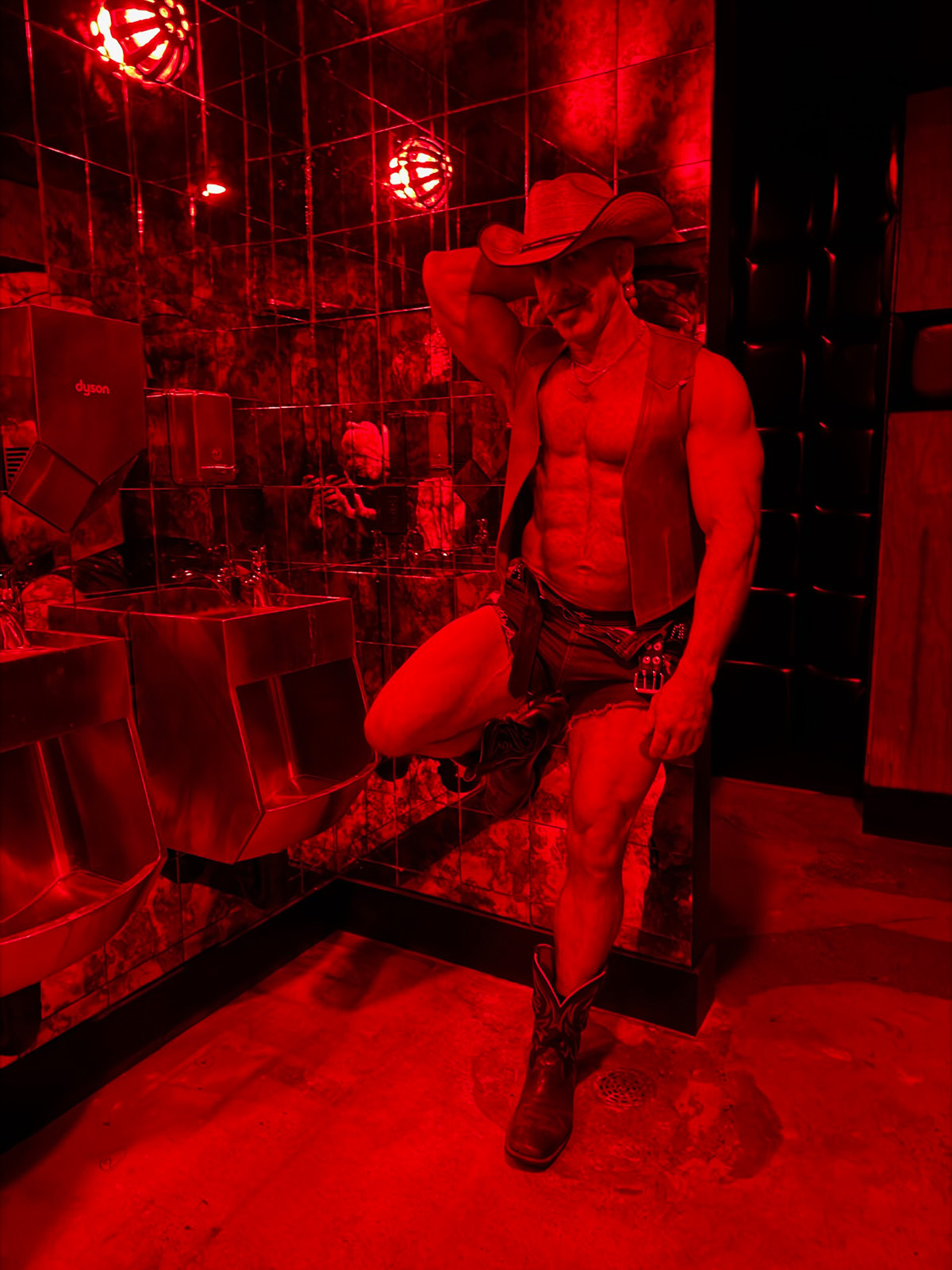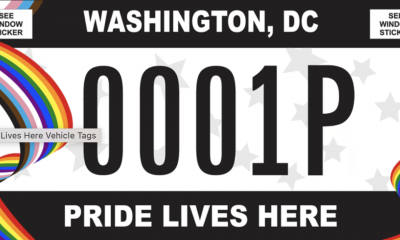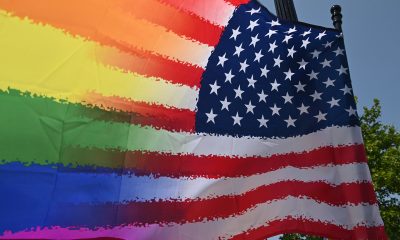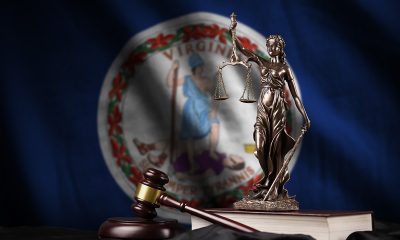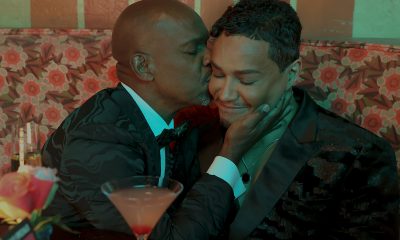Nightlife
D.C.’s hottest new LGBTQ nightclub is — Bunker
‘A real playground with energy that’s unlike anything else’

D.C.’s hottest new nightclub is — Bunker. Opening within the next month, Bunker takes over the space vacated by Tropicalia at the busy corner of 14th and U streets, N.W. And filling a need for a dedicated dance club, Bunker is set to take D.C. LGBTQ nightlife to the next level.
Owned by the producers of KINETIC Presents, Zach Renovatés and Jesus Quispe, Bunker will be open Thursday-Sunday, each night featuring a distinct theme.
Bunker takes up the mantle of celebrated nightlife spots that have closed in recent years: Cobalt, Town Danceboutique, Secrets, and DC Eagle.
“As a longtime DC resident, it was devastating,” says Renovatés. “ There was no guaranteed space to have that night out for dancing, just for our community.”
Running KINETIC Presents, Renovatés has been producing events for the LGBTQ community for nearly a decade. He works with business partner Quispe to host rotating parties at various venues, like Echostage and Bliss.
KINETIC, however, has become not just a company that throws parties, but a safe space. For example, KINETIC partners with Capital Pride Alliance in June and throughout the year, and produced the official nighttime parties during this year’s Mid-Atlantic Leather in partnership with Centaur MC. During the monkeypox outbreak, KINETIC provided attendees with health information and guidance. With its own space, Renovatés can leverage a physical location as a more substantive platform to gather and share.
Yet as KINETIC grew, so did the need for a dedicated, LGBTQ-owned-and-operated location for guests to get together.
Bunker presented itself as that location.
“This is a space that’s 100% for the LGBTQ community and by the LGBTQ community,” he says.
“Our goal,” he says, “is to grow nightlife, to bring more talent and more tourists. We want to support the economic growth of the city, and know that LGBTQ patrons can help do that with Bunker.”
What also sets Bunker apart is the live DJ sets that spin every night it’s open. “You can expect production levels similar to venues that KINETIC was in,” he says. “What is important to me is that it has unique music every night.”
Bunker will source local, national, and international DJs representing various genres. Pop, house, circuit, and disco will all be featured. In the works is also Sunday “disco daddy” tea day-to-night party. Other events include a nightly 7-9 p.m. happy hour as a social lubricant for the rest of the evening, whether that’s at Bunker or another location. Renovatés notes that he has strong relations with other gay bars in the city, and looks forward to being located within walking distance of many of them.
Renovatés says that drag and other entertainment are also in the works.
As for the actual space itself, “when I descended those stairs since I saw it as Tropicalia, the first thing I saw was beautiful concrete walls – that’s why we went with the name. We embraced that.”
“With Bunker, we’ve taken the interior down to its essentials and are rebuilding it exactly for what our community needs.” He shied away from leaning in too hard on the underground aesthetic. While plenty of concrete delivers the bunker vibe, “where Bunker shines is bringing in murals, lighting, sound, and more. It represents the color and vibrance of community.” The 11-foot ceilings certainly helped.
A custom-built, 600-pound steel door that “looks like it was blasted into the side of a mountain” welcomes partygoers. While inside is lots of steel and rock, it still has character. “It’s like a ‘60s Cold War shelter made fabulous,” he says. Lively murals by various artists are splashed across the space, with relaxed seating meant to be used earlier in the evening.
“Our goal is that every single night, someone local or visiting can get an incredible DJ and lighting experience in a safe space that’s so important today,” says Renovatés. Bunker is not only a place to dance, he notes, it is the embodiment of the community space that was so lacking.
As Bunker’s website teases few details on the club, Renovatés hints that Instagram may be the platform for more information as the grand opening gets closer.
As soon as that concrete door lets guests in, Renovatés wants people to expect “a real playground with energy that’s unlike anything else in D.C.”

Nightlife
9:30 Club, other venues unveil blockbuster WorldPride plans
Betty Who, Bob the Drag Queen, Janelle Monáe to perform

On the heels of the announcements of Cynthia Erivo and Doechii headlining free weekend events during WorldPride June 7-8, legendary live music venue 9:30 Club and its partner locations have launched bombshell show announcements of their own, featuring D.C. fan favorites, dynamic combinations, and new artists in honor of WorldPride in Washington, D.C. The lineup features Betty Who, Bob the Drag Queen, Janelle Monáe, and many more.
I.M.P. Concerts, an independent concert promotion and production company, which operates the 9:30 Club, the Anthem, Lincoln Theatre, Merriweather Post Pavilion, and its newest venue, The Atlantis, has developed a weeklong WorldPride lineup that extends across its portfolio of venues.
Jen Hass, the 9:30 Club booking director, and Guillaume Desnoë, the creative director, told the Blade that, “as soon as we found out WorldPride was coming to D.C., we decided to go beyond normal programming. We wanted something really special for all of our venues,” they said. “We always incorporate Pride into our events, but WorldPride is another level, and we want to step it up.”
During prior years’ Pride celebrations, the 9:30 Club has hosted events and parties, including the long-running Mixtape party. This year, the shows are much more ambitious.
The week kicks off on May 31 with Snow Wife playing at The Atlantis. Then, on Thursday June 5, are two huge shows, each featuring two stars that have been central to the LGBTQ cultural experience. For a seated show at the Lincoln Theatre, Sibling Rivalry Live with Bob the Drag Queen & Monét X Change will perform, featuring their signature banter, commentary, stories, and sisterly arguments. The event is a live engagement based on their podcast of the same name. Monét X Change was Miss Congeniality on “RuPaul’s Drag Race” season 10 and winner of AS4, and Bob The Drag Queen was winner of season 8.
On the same night, at The Anthem, legendary performer and icon Grace Jones will be joined onstage by Janelle Monáe for a unique twosome.
On Friday night June 6, MIXTAPE is back for WorldPride Weekend, bringing the LGBTQ community together for a night of music and dancing. As usual, DJs Matt Bailer and Shea Van Horn will play a mix of house, indie dance, nu-disco, electropop, and throwbacks.
On Saturday, June 7, hometown favorite and perennial Pride stalwart Betty Who will perform a late-night set at the 9:30 Club.
“It feels like a very important time to be hitting the road, creating spaces for joy,” said Betty Who. “D.C. has such a special energy, and my history with the 9:30 Club is long and beloved. I’m really looking forward to returning home to a venue I have so many beautiful memories in to create some new ones.”
Hass notes that “it’s special to have Betty Who at 9:30 Club. She’s always been an incredible performer over the years. She’s played at both The Anthem and 9:30 Club before. Having her back is exciting because it’s full circle and shows how much she means to the queer community in DC.”
Earlier that same evening, Perfume Genius will be onstage at 9:30 Club as well.
Finally, after a week-plus-long series of shows, the list features a concluding spectacular: the Closing Drag Show, “an energetic night of drag and dance,” featuring contestants from “RuPaul’s Drag Race” (the full lineup of participating Queens has not yet been released).
9:30 Club is an official WorldPride partner, having been in talks with the organizing committee for several months, all with the same goal: “to make WorldPride incredible in D.C.,” say Hass and Desnoë. Plus, $1 from each ticket will be donated to the Capital Pride Alliance in conjunction with WorldPride DC 2025.
Hass and Desnoë also noted that it was important to them to bring in various types of acts and performances, across all of their venues. “In many ways, WorldPride is special. Our list of shows is part of what we do all the time. We pay attention to and are part of the community. The 9:30 Club and IMP represent diversity, acceptance, safe space, and joy”
In addition to the published list of shows, additional acts will be announced in coming weeks.
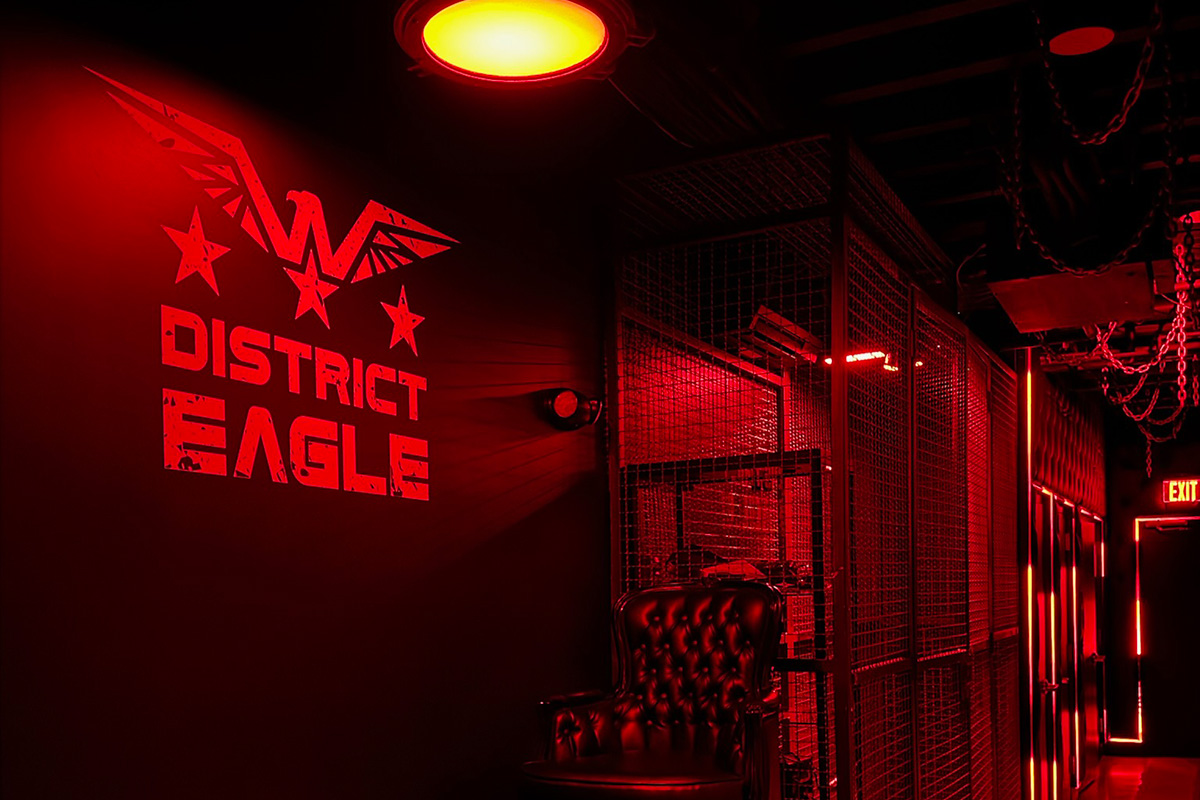
Seeing red: it’s not just for ire toward the president’s Executive Orders. Next week is also Valentine’s Day. Your faithful gay bars and establishments are gearing up (in some cases, literally) for the holiday. Here is a list of just a few options for the LGBTQ+ set.
Crush
On Feb. 14, Crush debuts a new event, just in time for the holiday. Meet Grizzly, a monthly Bear Happy Hour. Running 5-10 p.m., Grizzly features not only discounted drinks ($4 draft, $8 pitcher, and a $9 Bear Crush), but food: there will be free hot dogs during the evening. Without skipping a beat, later that night is a Valentine’s Day Stop Light Party 10 p.m. with DJs. They’ll have green, yellow, or red stickers so your crush can see if you’re available. There’s no cover for either.
Bunker
This Valentine’s Day, Bunker is turning tradition on its head with F*CK CUPID, a high-energy celebration for those over the holiday hype. Whether you’re flying solo or just want to skip the clichés, enjoy an unforgettable night with a special performance by a to-be-announced local drag queen and a dynamic set by Miscalculated. With free entry for singles and just a $5 cover for couples, it’s the perfect chance to dance the night away without the romance-themed distractions.
District Eagle
Join District Eagle this Valentine’s Day for Leather Lovers Gear Night, an inclusive event for all members of the leather community. DJ Jason James will provide the beats throughout the night, and guests wearing gear can enjoy 10% off drinks until midnight. Whether you’re single, taken, or in a situationship, everyone is welcome to celebrate in a welcoming, gear-friendly environment.
Number Nine
Nine is also launching a new event, titled Single Mingle, a singles mixer, the event will rotate theme for differing tastes. This first event takes place on Feb. 13, 7-9 p.m., upstairs, for those interested in dating queer men. Tickets are $15 and include a complimentary first drink plus ice breakers. On Thursday, Feb. 27, along with DC Gay Girls+, Nine will host a Single Mingle event for those interested in dating in the Sapphic community.
Additionally, Uproar will host a “Cupid Undies” event on Feb. 13 with cocktail specials; Licht is offering a “Date Night” special that includes two cocktails, two glasses of Champagne, and a cheese board for $35; and gay-owned Wunder Garten’s event on Feb. 14 is apres-ski themed with drinks like Love Potion and Cupid’s Arrow.
Nightlife
District Eagle a bold new haven for LGBTQ kink communities
U Street speakeasy to open Jan. 22

Last weekend, leather clad members of the LGBTQ community from across the nation braved the snow and cold to venture down Washington’s New Jersey Avenue to visit a select few hotels participating in the capital city’s largest kink event — the Mid-Atlantic Leather weekend. As the snow slowly melted away and the weekend ended, the desire for District residents to get hot in their leather (and other kink attire) remained.
Zach Renovátes, co-founder of nightlife production company Kinetic Presents and co-owner of gay club Bunker, sat down with the Washington Blade to discuss how his most recent project, District Eagle (1357-B U St., N.W.), is harnessing this pro-kink energy Washington has while also celebrating the vibrant diversity of the city’s kink and queer nightlife communities.
“District Eagle is first and foremost, a space designed specifically for our LGBTQ community to include our trans and lesbian brothers and sisters,” Zach Renovátes told the Blade. “We are excited to bring a new space into D.C. that focuses specifically on our kink communities.”
The District Eagle embraces its mission to celebrate LGBTQ kink communities. From nods to the history of cruising woven into the bar’s design — like the cheeky “Fruity Candy” machine at the entrance — to the striking details of “100-year-old hand-carved wooden foundry patterns” and “incredible custom upholstery and welding” that bring the theme to life, every element of the space is carefully curated. Kink isn’t just a theme here; it’s the heartbeat of the bar.
“To us, design is foundational and unbelievably important and is what caused this to actually take so long,” Renovátes said. “We’re the only LGBTQ establishment within D.C. that operates as a speakeasy. There’s no external signage. You’re going to have to know where our establishment is to come enjoy it.”
“Its nature plays to an homage to the history of our marginalized community and the ways in which we had to, by necessity, hide our establishments in the past,” he added. “When customers enter our space, I encourage them to look around and see all of the little, tiny details that have gone into creating a space that is entirely unique from any space they’ve ever seen.”
Although the bar may be hidden from the outside, the inside was created with admiration, curiosity, and a deep respect for the kink community.
“We have done outreach to a number of different groups, including the Centaur MC, who we have a close collaboration with for the Mid-Atlantic Leather weekend,” Renovátes said. “As well as members of the pup community, which will see the first [pup] event kicking off on Saturday, Feb. 1, led by Pup Ruby. We are excited to continue collaboration with additional communities and encourage them to reach out to us, either by email or through our social media account.”
Renovátes made it clear that although the District Eagle’s name does remind some of the former DC Eagle, his bar has “no affiliation or history with the ‘DC Eagle’” and “simply pays homage to the international understanding of and what an Eagle concept is.”
That “Eagle concept,” Renovátes explained, was created by using feedback from those knowledgeable, and doesn’t stop at being Washington’s only LGBTQ kink bar. It has a store selling gear for patrons to buy and immediately wear on the dance floor.
“The District Eagle is the starting point of an idea that we’ve had for a number of years and are excited to bring to fruition,” he said. “We have an adult store now, one of the few adult stores within the District of Columbia, and the only one specifically designed exclusively for our LGBTQ community. It is just the starting point for our grand opening weekend, but we will be continuing to listen to customer feedback and stock new and exciting kink and adult items.”
This mix of gay kink bar and adult store is not just a unique addition to D.C.’s nightlife but also a vital one.
“It is essential that we as an LGBTQ community continue to support local LGBTQ businesses,” Renovátes said. “It is always unfortunate to see the closure of LGBTQ spaces, because there are so few of them within our city, and so I am filled with hope that this space will provide an additional safe space for an increasingly marginalized community.”
Images of District Eagle’s store posted to its Instagram account showcased harnesses, jockstraps, short shorts, and more. “Grand Opening Weekend is your chance to try on leather, underwear, cock rings, and more,” the caption teased as a substantial number of anticipatory Washington LGBTQ bar fans liked the post.
In addition to the store, the space has another surprise — one that doubles the bar’s capacity from around 116 patrons to 300.
“Our establishment is a single-level establishment. However, we have an agreement with our neighbors upstairs to transform the second floor into ‘Eagle XL’ on select nights, including our grand opening weekend. This allows us to dramatically expand the size of our space, which is extremely useful for recurring events that we plan to introduce, as well as for major weekends, such as the upcoming World Pride weekend.”
Renovátes went on to say how the vision of District Eagle couldn’t have been executed without the help from a few others who helped make Bunker a success.
“My fiancé Justin was really fundamental to me being able to open this space,” Renovátes said. “He is the technical director at both the District Eagle and Bunker… he’s instrumental in helping to create this. Without him, I wouldn’t have been able to do this.”
“We are also so fortunate to have had the close collaboration with our designer, Jasin Cadic, who additionally designed Bunker,” he added. “It is within that collaboration that we were able to create such a wholly unique space, not only for D.C., but worldwide.”
“District Eagle will primarily be a no cover establishment,” he said. “We are going to be encouraging customers to start off their night at District Eagle and grab a couple of drinks. We will be introducing a new policy that will allow customers who have met a certain minimum to essentially print out their receipts and use that as a cover into Bunker on non-holiday weekends.”
Renovátes hopes that this may ease some potential struggles when going out to multiple places in one night.
“In this way, we want to encourage individuals who might be desiring to go to Bunker, but it is not within their budget, as it relates to a cover, to be able to enjoy both establishments and avoid paying a cover at Bunker.”
In addition to the difference in cover charge, Renovátes wants to make it clear that the themed nights at District Eagle are intentionally curated.
“We are designing different nights that have a dress code strongly recommended and we’ll be further encouraging the wearing of dress code for those specific nights through drink specials,” he said.
With all the varying themes, Renovátes wanted to make it clear that anyone who wishes to celebrate their LGBTQ kink pride should feel comfortable doing so at the District Eagle.
“People of different kink communities that have varying kink levels should all feel comfortable to come see and experience our space, knowing that certain nights will be designed for certain communities. For communities that want to see something specific, we encourage them to reach out to us.”
And although the sexy and alluring vibe of the bar does lay the groundwork for a titillating night, safety and consent are at the top of every staff member’s mind while working at District Eagle.
“Both safety and consent are of the utmost importance to our establishment,” Renovátes said. “We are training our security personnel to both be extremely responsive and direct with all customer issues. We are providing safe-sex materials, as well as signage on site to inform patrons of our policies and to ensure that our establishment strongly enforces the need for consent.”
District Eagle, located at 1357-B U St., N.W., will host its grand opening on Wednesday, Jan. 22, from 6 p.m. to 2 a.m. The bar will maintain the same hours on Thursday, extend its Friday hours from 6 p.m. to 3 a.m., and open from 2 p.m. to 3 a.m. on Saturday. On Sunday, District Eagle will welcome guests from 2 p.m. to midnight.
